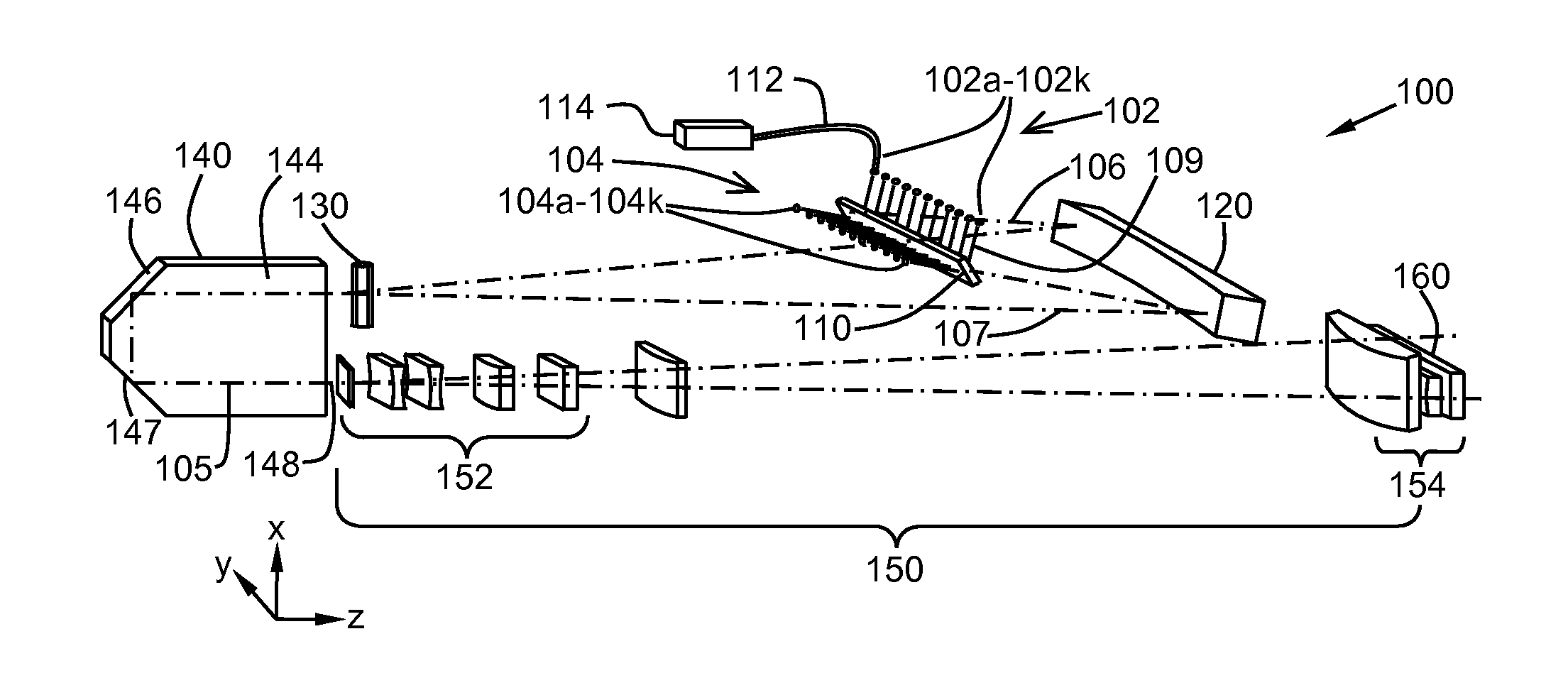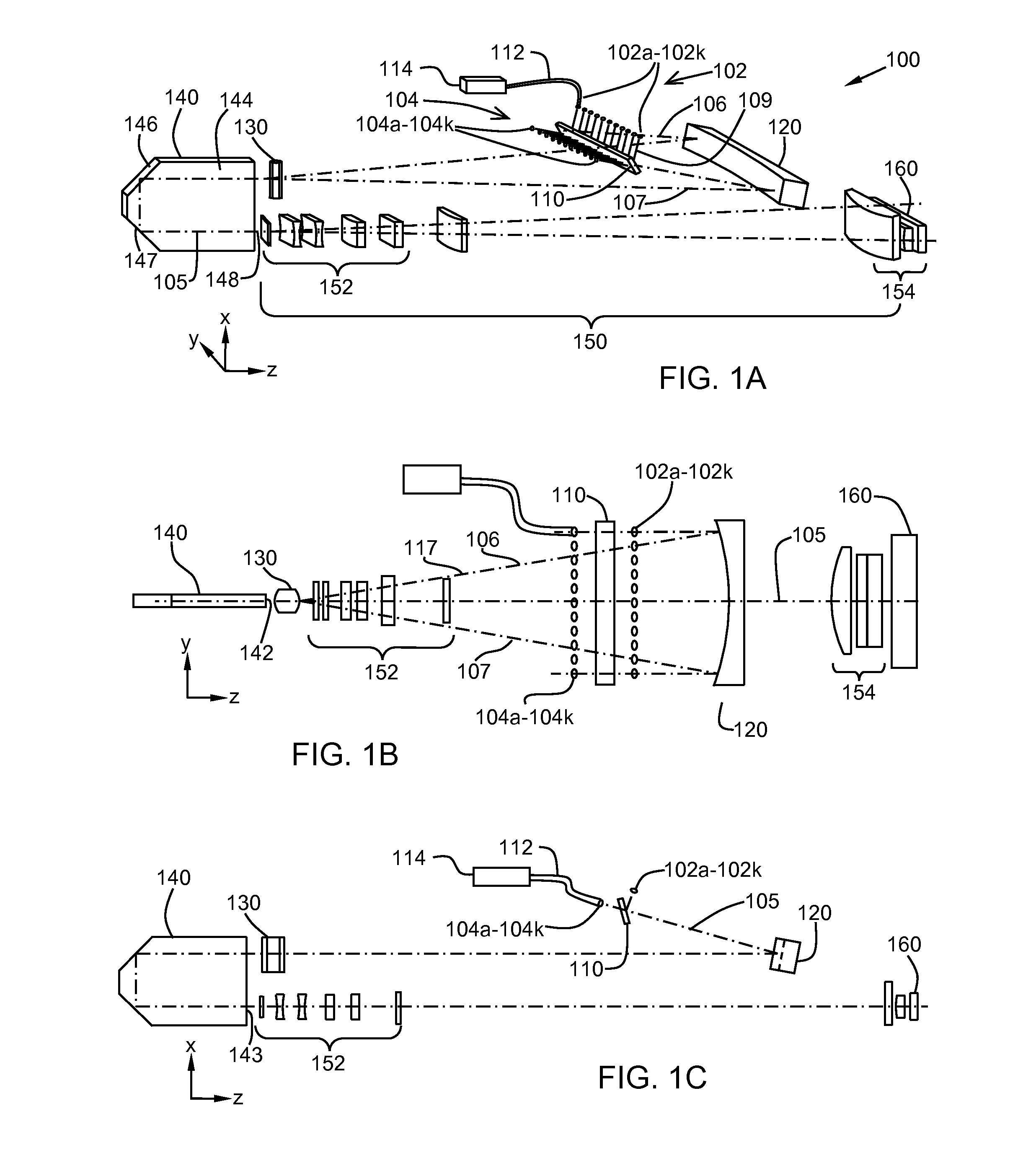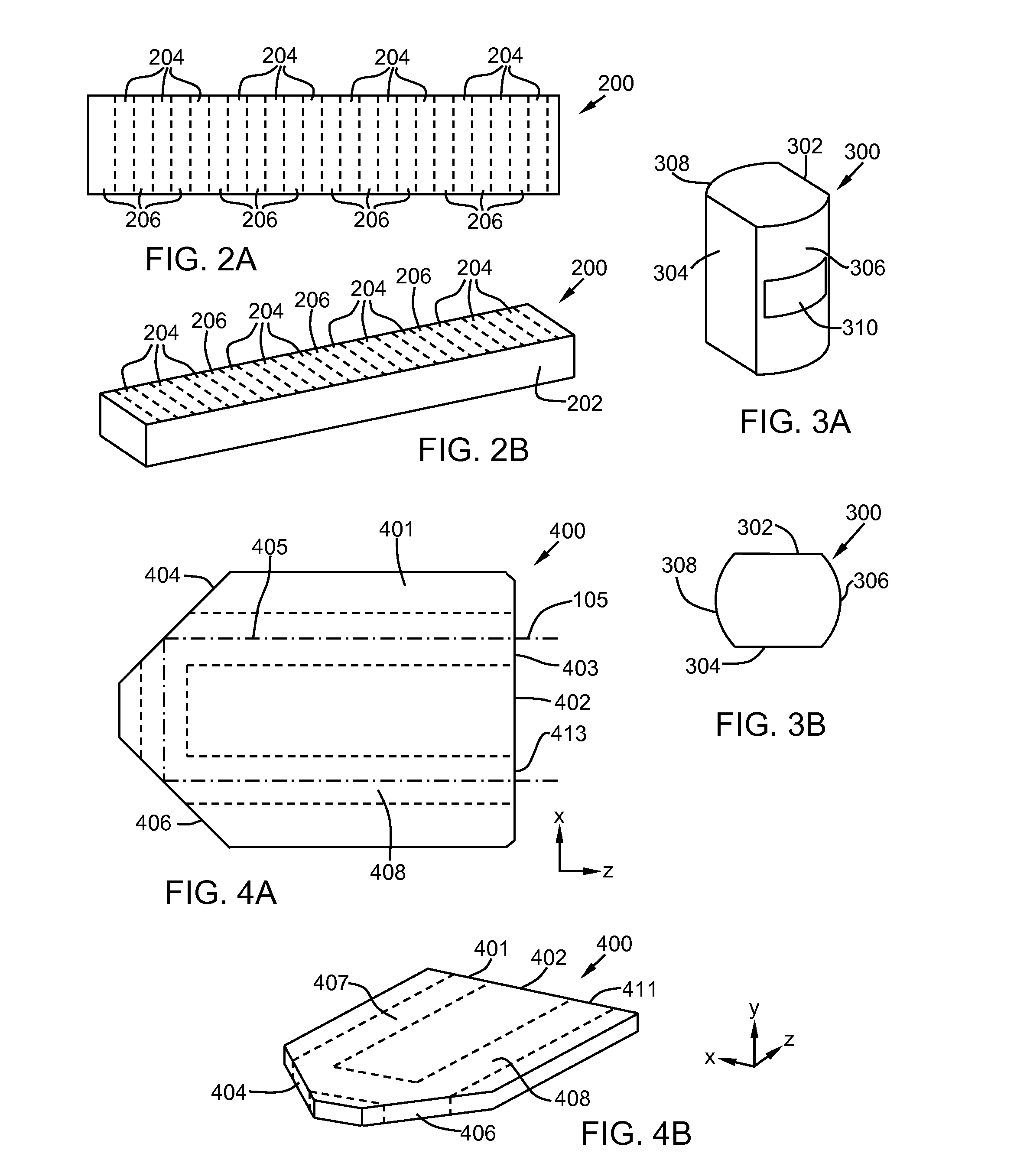Beam homogenizer
a beam homogenizer and beam technology, applied in the field of beam homogenizers, can solve the problems of increasing the number of optical elements, imposing difficult requirements on beam uniformity, and requiring complex arrangements, etc., to achieve the effect of increasing the numerical aperture of beams, and increasing the numerical apertur
- Summary
- Abstract
- Description
- Claims
- Application Information
AI Technical Summary
Benefits of technology
Problems solved by technology
Method used
Image
Examples
Embodiment Construction
[0023]As used in this application and in the claims, the singular forms “a,”“an,” and “the” include the plural forms unless the context clearly dictates otherwise. Additionally, the term “includes” means “comprises.” Further, the term “coupled” does not exclude the presence of intermediate elements between the coupled items.
[0024]As used herein, an optical flux refers to propagating optical radiation in a wavelength range of between about 300 nm and 2000 nm, and typically between about 700 nm and 1600 nm. Typically, such optical fluxes can be propagated in solid optical waveguides such as optical fibers that are silica-based. However, in other examples, longer or shorter wavelengths can be used, and waveguides such as fibers can be made of other materials as appropriate. In addition, in convenient examples, an optical flux provided to a fiber or other waveguide can be produced by a laser or other source that can produce a spatially coherent flux, but light emitting diodes or other s...
PUM
| Property | Measurement | Unit |
|---|---|---|
| wavelength range | aaaaa | aaaaa |
| wavelength range | aaaaa | aaaaa |
| wavelength range | aaaaa | aaaaa |
Abstract
Description
Claims
Application Information
 Login to View More
Login to View More - R&D
- Intellectual Property
- Life Sciences
- Materials
- Tech Scout
- Unparalleled Data Quality
- Higher Quality Content
- 60% Fewer Hallucinations
Browse by: Latest US Patents, China's latest patents, Technical Efficacy Thesaurus, Application Domain, Technology Topic, Popular Technical Reports.
© 2025 PatSnap. All rights reserved.Legal|Privacy policy|Modern Slavery Act Transparency Statement|Sitemap|About US| Contact US: help@patsnap.com



